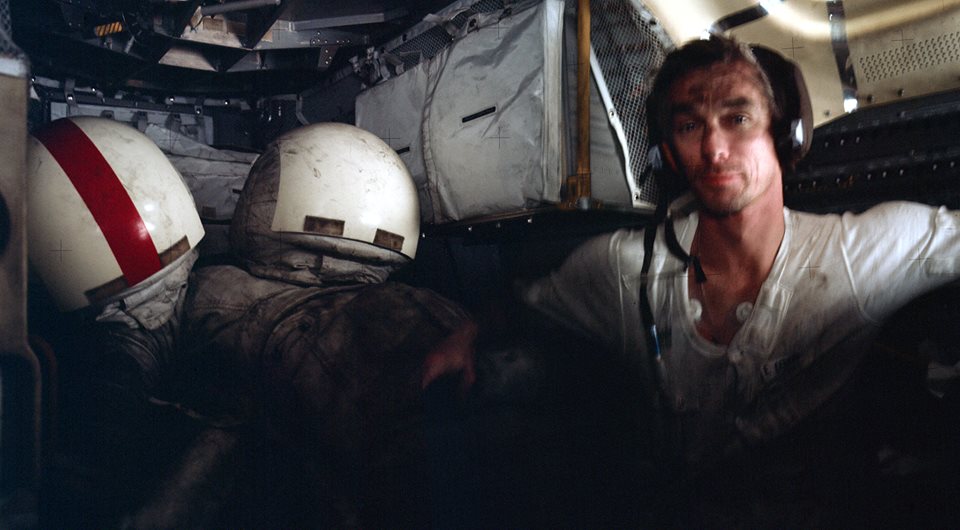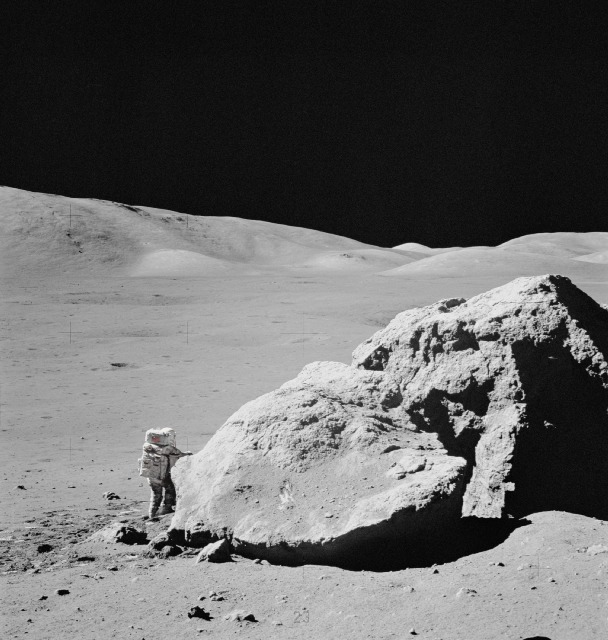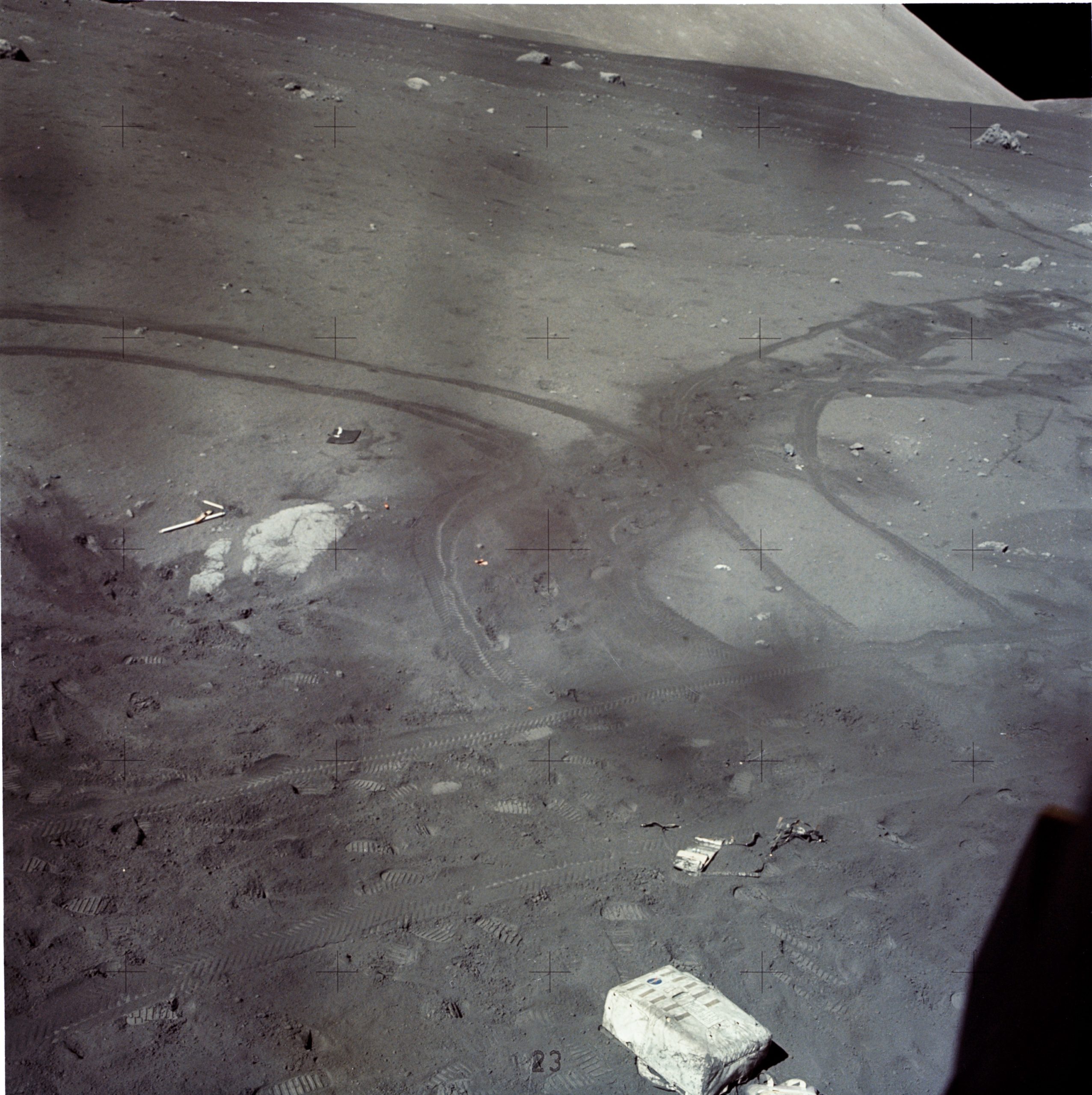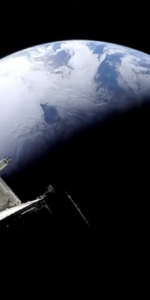
Three days since the Orion Crew Module (CM) hit the waters of the Pacific Ocean, off California’s Baja Coast, wrapping up the hugely successful Artemis I mission, we are reminded of the very last day that human beings last called the Moon their temporary home. On 14 December 1972, Apollo 17 Commander Gene Cernan and Lunar Module Pilot (LMP) Harrison “Jack” Schmitt awoke for their third and final “morning” on the surface of our closest celestial neighbor.
Launched a week earlier, Cernan and Schmitt spent 75 hours in a pretty little valley called Taurus-Littrow, logged more than 22 hours walking across its rugged terrain and drove 18 miles (29 kilometers) in the battery-powered Lunar Roving Vehicle (LRV). But on 14 December, 50 years ago, the astronauts awoke in the cramped confines of Lunar Module (LM), “Challenger”, to the realization that this day would mark their departure from the Moon and their return to Earth.
Neither man, though, could have imagined in his wildest dreams that more than a half-century would elapse before bootprints would again dot the lunar surface.

Late the previous “evening”, Cernan had taken humanity’s poignant last steps of the 20th century. He drove the LRV to a spot about a mile (1.6 kilometers) from Challenger, parked it and configured its television camera to record their liftoff from the Moon. As he dismounted, Cernan paused to carve his daughter Tracy’s initials into the soft lunar topsoil. Then he returned to Challenger and clasped the ladder one final time.
“Bob,” he had radioed Capcom Bob Parker in Mission Control, “this is Gene and I’m on the surface. And as I take these last steps from the surface, back home for some time to come, but we believe not too long into the future, I believe history will record that America’s challenge of today has forged man’s destiny of tomorrow…And as we leave the Moon at Taurus-Littrow, we leave as we came, and God willing as we shall return, with peace and hope for all mankind. Godspeed the crew of Apollo 17.”

Fifty years on, with Cernan and Apollo 17 Command Module Pilot (CMP) Ron Evans having sadly left us, only ten of the 24 lunar voyagers—and just four Moonwalkers—are still alive and it can only be hoped that they will be around when the Artemis Team makes its triumphant return to the Moon, later this decade. The world bade farewell to the first Moonwalker, Neil Armstrong, back in August 2012, and most recently his Apollo 11 crewmate Mike Collins died in April 2021.
Many of those pioneers expressed their undisguised angst over the years that the glory of Project Apollo had been unceremoniously abandoned in its prime. Quoted by Andrew Chaikin in his landmark book A Man on the Moon, Apollo 14 astronaut Stu Roosa once remarked that “history will not be kind to us, because we were stupid”.

Cernan and Schmitt received their customary wake-up call on 14 December 1972 in the broom-closet-sized confines of Challenger’s tiny cabin by Capcom Gordon Fullerton. But in actuality, both men were already awake, following a sleepless final night in the ethereal stillness of the Moon.
Schmitt had enjoyed six hours of fitful sleep, Cernan about five. “We’re in the midst of a nice hamburger omelet,” Cernan chuckled, to which Schmitt added that in the peculiar one-sixth gravity, most of their breakfast ended up all over them.

It was a little more than a week prior to Christmas, so Schmitt sang Fullerton a tune:
It’s the week before Christmas
And all through the LM
Not a commander was stirring
Not even Cernan.

The samples were stowed in their places with care
In hopes that, with you, they soon will be there.
And Gene is in his hammock, and I in my cap,
Had just settled our brains for a short lunar nap.

Asked by Fullerton if he had spent all night composing his masterpiece, Schmitt replied: “Gordy, that’s for the kids. They are the future.”
Those final hours on the Moon were a flurry of activity, as Challenger’s hatch was opened one final time to discard unneeded equipment. “Cameras, tools, backpacks and other now-useless material were flung to the surface,” Cernan wrote in his memoir, The Last Man on the Moon. “We had to shed weight if we were going to get off the Moon safely.

Mission planners had worked out the exact balance needed and every container of rocks we brought aboard was weighed on a hand-held fish-scale, calibrated for one-sixth gravity, before being stored. We had just enough fuel to get us into orbit with almost no margin for error, so the overall weight of the spacecraft, its passengers and cargo of rocks was critical. We threw out nearly everything that wasn’t nailed down.”
Although Cernan and Schmitt liked to refer to this short session as an Extravehicular Activity (EVA) in its own right—and although Challenger’s cabin pressure was reduced to a condition of near-vacuum—they would not physically leave the LM again. Instead, they bagged up the “jettison bags” just inside the hatchway and gave them each a hefty kick to deliver them just over the lip of Challenger’s tiny porch.

From there, they would fall like snowflakes in the low lunar gravity to the surface. Schmitt snickered and called them “Santa Claus bags”.
A brief communications “pass” with crewmate Ron Evans in the orbiting Command and Service Module (CSM) “America” prompted Cernan to remind him to keep the docking probe extended and ready for their arrival. Evans promised that he would.

Finally, with everything buttoned up and ready to leave, the last human explorers of the Moon bade farewell to Taurus-Littrow at 188 hours into the 13-day Apollo 17 mission. “Let’s get this mother outta here,” Cernan radioed, in what would prove to be some of the final words—to date—to be spoken by humans on another celestial body.
Within a matter of minutes, Challenger’s ascent stage had achieved a low lunar orbit and soon thereafter made a perfect docking with a very happy Evans. Several days later, on 19 December, America splashed down in the Pacific Ocean, closing out the first chapter of humanity’s exploration of the Moon.

And as the Artemis Generation looks set to return there a few short years from now, it is impossible not to be reminded of Gene Cernan’s last words on the surface of the Moon:
God willing…
We shall return…
Someday.
FOLLOW AmericaSpace on Facebook and Twitter!
Missions » Apollo »




